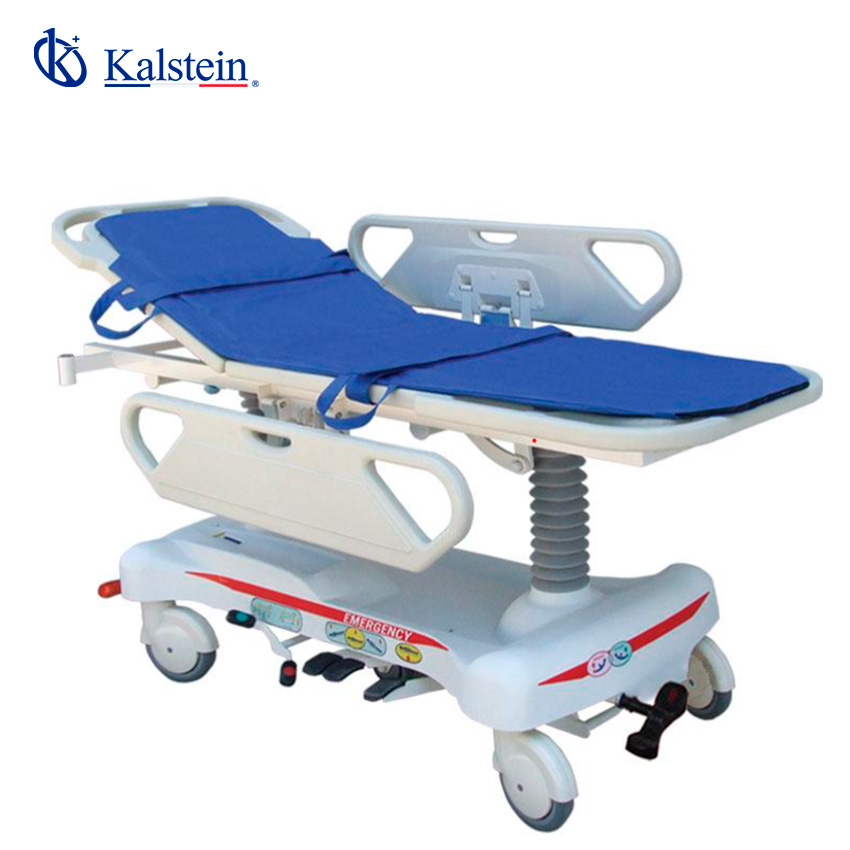Kalstein´s medical transport stretchers are essential in any clinical setting, enabling the safe and comfortable transport of patients.
In this article, we will thoroughly review the features and benefits of transport stretchers, from design to performance, highlighting their impact on improved clinical outcomes and medical precision.
Are you yearning for top-tier medical equipment, ready to enhance the efficiency of your laboratory? Visit https://kalstein.co.nz/category-product/medical-line/medical-transfer-stretcher/ to explore our high-end catalog, packed with the best finds at the most competitive prices. Excellence marks our brand, we innovate and manufacture high-precision equipment, both reliable and durable to meet your needs. Why wait? Make your quick and secure online purchase, take the leap towards the future of medical technology today. https://kalstein.co.nz/
Design and Ergonomics of Transport Stretchers
The design of a medical transport stretcher is crucial to ensuring patient comfort and ease of use for healthcare staff. Modern stretchers are designed with lightweight yet robust materials that allow for easy and safe transport. Ergonomics is another fundamental aspect, as stretchers must adapt to the patient’s anatomy, avoiding pressure points and ensuring proper posture during transport.
Kalstein’s transport stretchers are also equipped with adjustable side rails and locking systems to prevent accidental falls. These features not only protect the patient but also facilitate maneuvers by medical personnel, reducing physical effort and the risk of injury. The incorporation of wheels with sturdy brakes ensures smooth mobility and secure positioning, especially in high-traffic areas.
Materials and Construction: Quality and Durability
The quality of the materials used in the construction of transport stretchers is a determining factor for their durability and functionality. Manufacturers use aluminum alloys and stainless steel, which offer resistance to corrosion and wear, prolonging the equipment’s lifespan. Additionally, the mattresses are made from hypoallergenic and easy-to-clean materials, ensuring hygiene and patient comfort.
The robust construction of Kalstein’s transport stretchers ensures they can support heavy loads without compromising safety. Adjustment systems, such as height adjustability and reclining backrests, allow the stretcher to be adapted to different clinical situations, facilitating medical procedures and diagnostics. These aspects are crucial for improving clinical outcomes, as high-quality equipment can make a difference in emergency situations.
Integrated Technologies: Innovation in Healthcare
The integration of advanced technologies in transport stretchers has revolutionized the way medical transfers are conducted. Some stretchers are equipped with vital signs monitoring systems, allowing the patient to be monitored during transport. This innovation not only improves medical precision but also provides real-time data that can be crucial in critical situations.
Moreover, stretchers with hydraulic or electric systems for height and position adjustment facilitate the work of healthcare staff, allowing for posture changes without physical effort. These technologies improve operational efficiency and contribute to a safer work environment. The incorporation of these innovations is a clear example of how technology can enhance clinical outcomes and optimize medical processes.
Impact on Patient Safety
Patient safety is a priority in the design and use of transport stretchers. Safety features, such as restraint belts and side rails, are essential to prevent falls and accidents during transport. These safety measures ensure that the patient remains immobilized and protected at all times, reducing the risk of injury.
Transport stretchers are also designed to facilitate patient access and egress, minimizing the risk of falls during these movements. The stability of the stretcher is crucial to prevent tipping and ensure safe transport, even on uneven terrain. These safety features significantly contribute to improved clinical outcomes, providing a safer and more comfortable experience for the patient.
User Experience: Ease of Use and Comfort
The user experience, both for the patient and healthcare staff, is a key aspect in the evaluation of a transport stretcher. The ease of use of modern stretchers allows medical personnel to perform transfers quickly and efficiently, reducing preparation time and improving patient care. Intuitive controls and simple adjustment systems are valued by users.
For the patient, comfort is essential. High-density mattresses and cushioning systems ensure a comfortable experience during transport. The ability to adjust the position of the stretcher allows the patient to be accommodated in the most comfortable and appropriate posture for their condition, which can be crucial for patients with injuries or chronic conditions. This combination of comfort and ease of use significantly improves the experience for both the patient and healthcare staff.
Maintenance and Care: Extending the Lifespan of the Stretcher
Proper maintenance of Kalstein’s transport stretchers is essential to ensure their optimal functioning and extend their lifespan. Manufacturers typically provide detailed maintenance guides that include regular cleaning, component inspections, and replacement of worn parts. Following these recommendations is crucial to maintaining the safety and functionality of the stretcher.
Ease of cleaning is another important aspect, especially in medical environments where hygiene is paramount. Stretchers are designed with smooth surfaces and materials resistant to cleaning products, facilitating disinfection and maintenance. Proper care not only ensures well-functioning equipment but also contributes to improved clinical outcomes by providing a safe and clean environment for the patient.
In summary, medical transport stretchers have significantly evolved, incorporating ergonomic designs, high-quality materials, and advanced technologies that enhance patient safety and comfort. These innovations not only optimize clinical performance but also facilitate the work of healthcare staff, improving clinical outcomes and medical precision.

